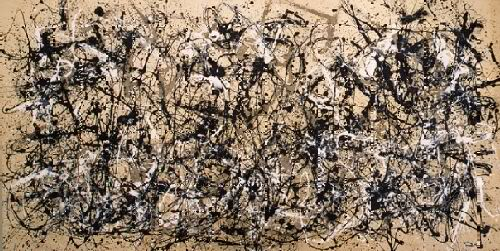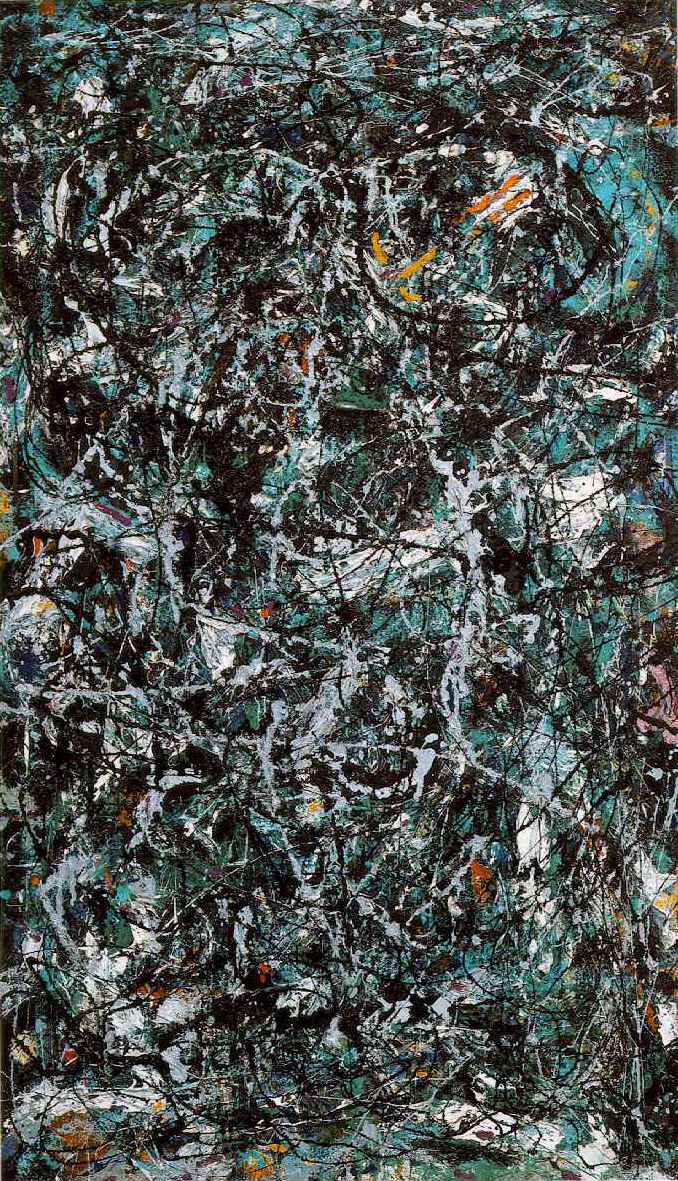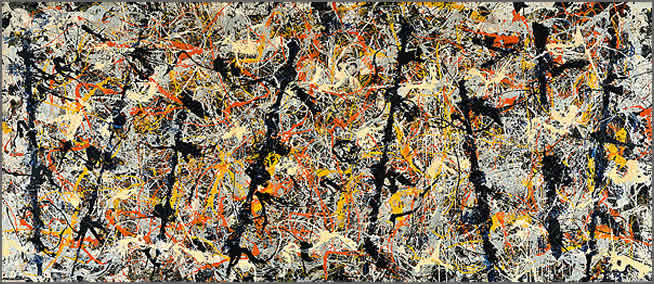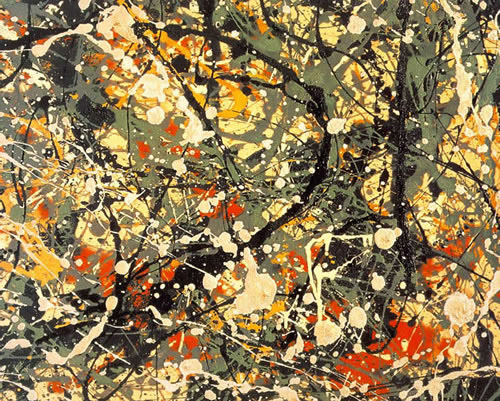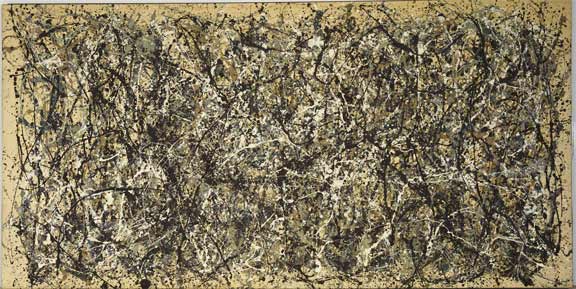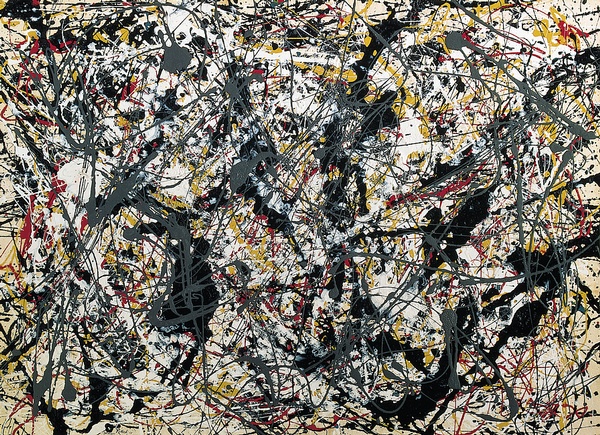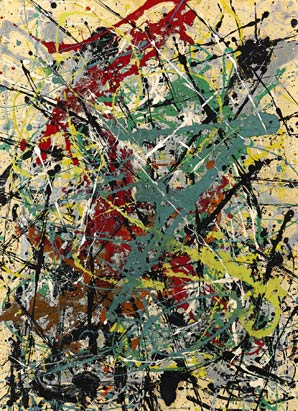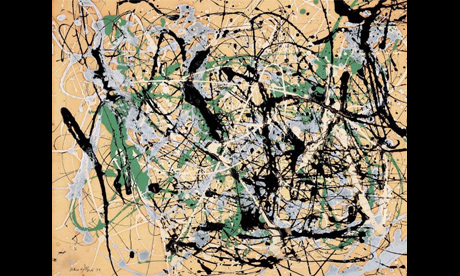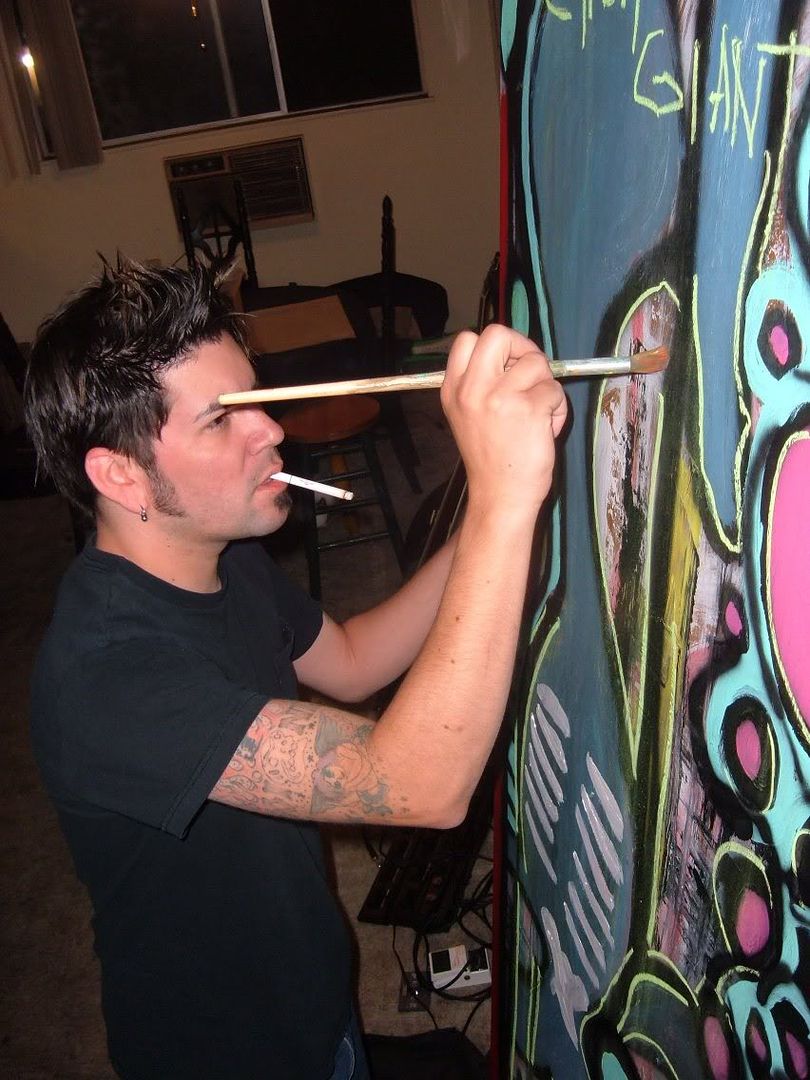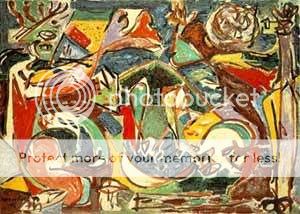Once you start talking art, you get me started:

Many things have been written about Pollock but there are still many things that we don’t know. Here are a few facts about the man behind the myth.
Did You Know…
• Lee Krasner, Jackson Pollock’s wife, changed her name. Her original name is Lenore Krassner.
• Pollock’s real first name is Paul. Right around the time that he moved to New York to study with Benton in 1930, he decided to drop his first name and use his middle name of Jackson.
• The only person to survive Pollock’s deadly car accident was his lover, Ruth Kligman.
• One of his most famous works is Blue Poles, painted in 1952. It was created with enamel and aluminum paint with glass on a canvas.
• The most important element in Pollock’s paintings is that of lines. When he first started using the method of pouring and dripping paint onto canvas, it resulted in huge areas covered with complex linear patterns that created image and form.
• “Jackson Pollock: Is he the greatest living painter in the United States?” That was the question on the front cover of Life magazine on August 8, 1949.
• His first experiment with liquid paint was at the Siquieros workshop in New York, 1936.
• The French equivalent of action painting, a form of abstract expressionism associated with Pollock, is Tachisme.
• Pollock was nicknamed Jack the Dripper because he literally dripped paint onto his canvas to create unique, intricate pieces.
• His brother Sanford knew Jackson had a special talent. In 1941, he wrote a letter to their eldest brother Charles about Jackson. He said if Jackson could “hold himself together, his work will become of real significance. His painting is abstract, intense, evocative in quality.”
• Pollock’s paintings differed from before he moved to the Hamptons and right after the move. Before moving to The Springs in East Hampton with his wife, his imagery was congested, the colors were somber, and the overall mood of his paintings was anxious and conflicted.
• After the move to the country, the colors were brighter, his compositions were more open, and the imagery reflected a new responsiveness to nature.
• His work Blue Poles, 1952 was originally inscribed with a ‘3’ and subsequently painted over with a ‘2’.
• In 1949, Pollock decided to number his paintings, including the year they were created, instead of using descriptive titles. This began with his 1949 solo exhibition at the Betty Parsons Gallery.
• Downward arching stretch-marks at the top edge of the canvas are common with Pollock’s works. This is because he would often hang them along a beam in his studio; another step in his creation process.

